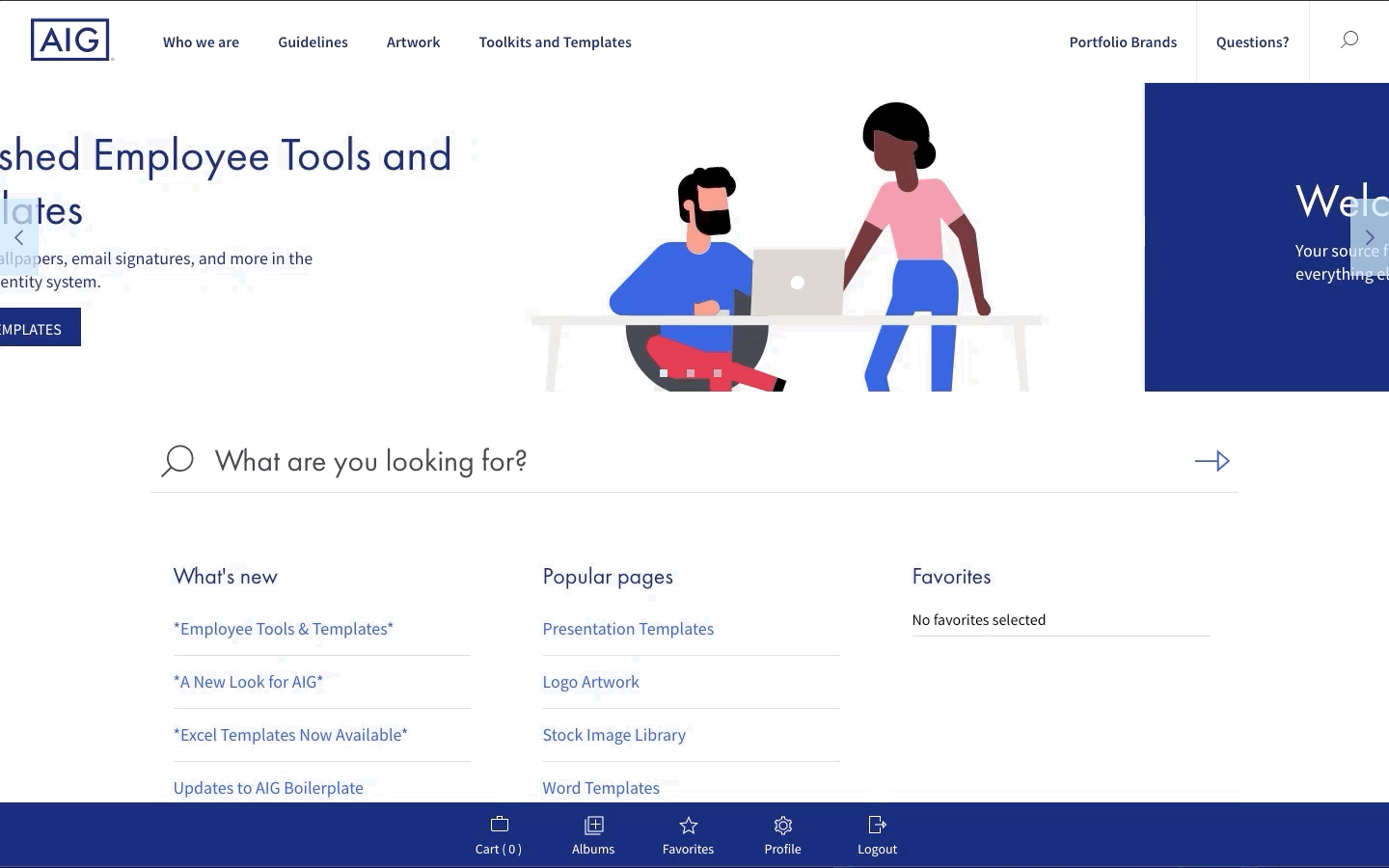Interactive vs Static Brand Guidelines
Which approach is right for your brand?
Interactive vs. Static Brand Guidelines: Whether you’re a seasoned designer or new to the field, understanding the differences between these two approaches can help you choose the best method for your brand’s needs.
What Are Static Brand Guidelines?
Static brand guidelines are traditional, printed or PDF-based documents, that outline how a brand should be represented. These documents are often designed to be printed or downloaded for reference. Many corporate brands still rely on PDF brand guidelines for their partners and employees.

Disadvantages of Static Brand Guidelines
Lack of Interactivity
Static guidelines offer a one-dimensional experience without interactive elements. Users can only view the content as-is without engaging with or exploring interactive features. Static PDF guidelines offer no real-time feedback or dynamic interactions, which can limit user engagement.
Difficult to Update
Updating static PDF guidelines requires creating new versions and redistributing them. Frequent updates can be cumbersome and lead to outdated information being used if users don’t have the latest version.
Once a PDF has gone out, the bell can’t be unrung. It’s in inboxes, on desktops, and sitting as one of 100 open PDFs on a marketer’s computer. Sending new, updated PDF guidelines whenever a brand element is updated is a versioning nightmare and a recipe for confusion, misalignment, and improper brand use. PDFs are, by their very nature, a static rulebook for people to follow.
What Are Interactive Brand Guidelines?
Interactive brand guidelines are digital resources designed for user engagement. They breathe life into the static PDFs brands are used to with interactive elements such as clickable prototypes, animations, and real-time feedback. Beam’s configurable Content Management System (CMS) and proprietary design token system, makes it simple to build and maintain beautiful Interactive Brand Guidelines sites that are true to your brand and inspirational for your stakeholders – when a brand’s very foundation, it’s assets, come alive with interactive examples on how to use them, along with animations showing how to apply them – the guidelines become more than rules, they become aspirational and inspirational.

Advantages of Interactive Brand Guidelines
Enhanced User Engagement
Interactive guidelines offer dynamic experiences, including clickable components, animations, and real-time updates. Engaging experiences can help users better understand and apply brand guidelines, making the content more memorable and useful.
Curating individuals’ experience is the most effective way to ensure the right context and depth of information are being served to the right people. Beam empowers segmentation through configurable user groups while ensuring “no (wo)man left behind” with unlimited users
Real-Time Updates
Interactive guidelines can be updated in real-time without the need for new documents. Users always have access to the latest version of the guidelines, which ensures consistency and accuracy. Beam Cascade enables quick and easy implementations and ongoing updates, providing your teams with time back to their days for other priorities
Interactive Prototypes and Examples
These guidelines often include interactive prototypes and examples for users to explore. Interactive examples help users see how design elements work in practice, improving understanding and application. Beam’s CMS is highly flexible with design components driven by the needs bespoke to brand centers. The CMS combined with Beam’s Cascade design token system enables users to easily tweak colors, shapes, spacing, and other components to showcase the visual identities of your unique brands.

When to Choose Interactive vs Static Brand Guidelines
When to Choose Static Brand Guidelines
For Simple, Traditional Needs: If your brand’s guidelines are straightforward and won’t require frequent updates or extensive interactive elements, static guidelines might be sufficient.
For Broad Distribution: If you need to distribute guidelines to a wide audience, including those without digital access, static documents are more accessible.
When to Choose Interactive Brand Guidelines
For Dynamic and Engaging Experiences: If you want to create an engaging, modern experience that can evolve over time, interactive guidelines are the way to go. Brand-aligned teams drive employee retention and healthy company culture, which reduces costs, drives productivity, and elevates the way people experience brand at every interaction
For Frequent Updates: If your brand’s guidelines are likely to change often, interactive guidelines provide a more efficient way to keep information up to date. An interactive approach eliminates hours, days, and weeks spent activating and governing brand, delivering back the gift of time and resources to be redirected into innovative, high-impact work that transforms business.
Understanding these can help you make an informed decision about which approach best suits your brand’s needs and goals. At Beam, we believe that brand guidelines are an organization’s greatest superpower – the key to developing a strong and consistent brand identity.
Dig Deeper
Learn more about the benefits of Interactive Guidelines
What approach do you prefer for brand guidelines? Share your thoughts by contacting us below.
Contact Us
Let's Connect
Have questions or want to learn more about how Beam can help your business? Get in touch with us today. We're here to help you navigate the digital landscape with ease.